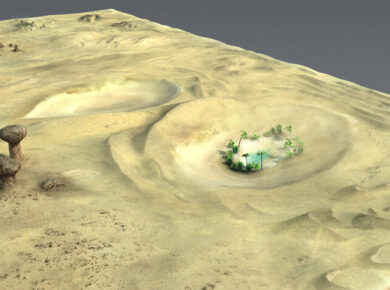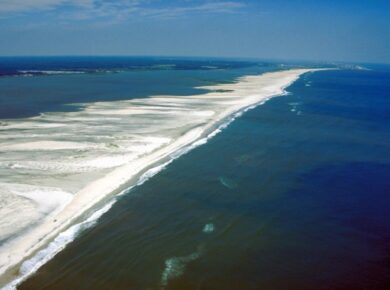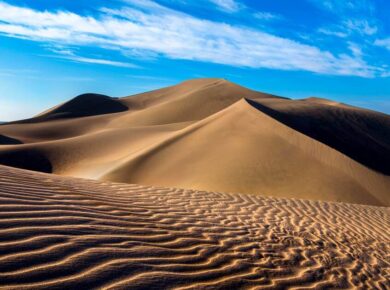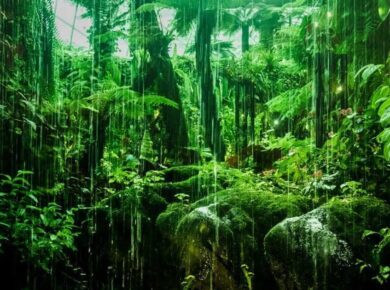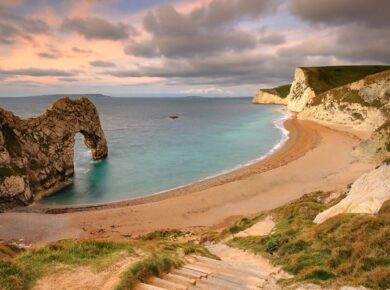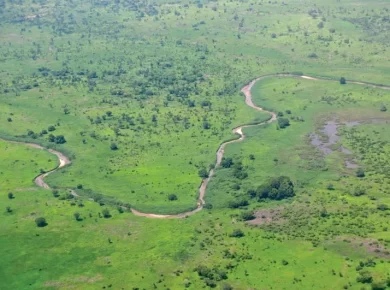Tundra Climate – Polar Arctic Climate
- Polar time of climate is found mainly north of the Arctic circle in the northern hemisphere.
- In the southern hemisphere, the virtually uninhabited continent of Antarctica is the greatest single stretch of ice caps, always snow covered.
- The ice caps are confined to Greenland & to the highlands of high latitude regions, where the ground is permanently snow covered.
- The lowlands, with a few months ice free, have tundra vegetation.
- They include the coastal strip of Greenland, the barren grounds of northern Canada & Alaska, and the Arctic seaboard of Eurasia.
Tundra Climate
- Characterized by very low annual mean temp. with long freezing cold winter (temp. well below freezing point) & brief cool summers
- Warmest month temp. seldom rises above 10*C
- Normally not more than four months have temp. above freezing point
- Within the Arctic & Antarctic circles, there are weeks of continuous darkness
- At the North Pole there are 6 months without light in winter
- Despite the long duration of sunshine in summers, when the sun does not set, temp. remains low as sun rays are too much oblique, with much of it gets reflected by the snow & remaining used up in melting the ice
- The ground remains solidly frozen for all but four months, inaccessible to plants with frost occurring all the time.
- Blizzards (severe snowstorm with high winds) with a velocity of 100 miles per hour are frequent.
- In coastal districts, where warmer water meets cold land, thick fog may develop, which lasts for days.
- Precipitation is mainly in form of snow & as it takes 10 – 12 inches of snow to make 1 inch of rain, precipitation in polar regions is generally light, not more than 12 inches in a year.
- Convectional rainfall is generally absent because of the low rate of evaporation & lack of moisture in the cold polar air.
Tundra Vegetation
- With a growing season of less than three months & temp. of the warmest month not exceeding 10* C, there are no trees in Tundra.
- Such an environment can support only the lowest form of vegetation, mosses, lichens & sedges.
- Climatic conditions along the coastal lowlands are a little more favourable, & some hardy grass viz. reindeer moss grows, which forms the only pasturage for herbivore animals such as reindeer.
- In the brief summer, when the snow melt & days are warmer & longer, berry bearing bushes & Arctic flowers bloom, brightening up the tundra landscape into Arctic prairies.
Human Activities & Developments
- Human activities of tundra are largely confined to coasts & people live a semi nomadic life.
- In Greenland, Northern Canada & Alaska lives the Eskimos, who live in igloos (ice homes) in winters & portable tents of skin when they move out to hunt in summers.
- In the Eurasian tundra live the other nomadic tribes viz.
| Lapps | Northern Finland & Scandinavia |
| Samoyeds | Siberia (From the Ural mountains & Yenisey basin) |
| Yakuts | Siberia (Baikal Mountains & Lena River Basin) |
| Koryuks & Chuckchi | North East Asia |
The Arctic region, once regarded useless, have gradually sprung up because of the discovery of minerals viz.
[clear]| Gold, Petroleum, Coal | Alaska |
| Nickel, Shale Gas | USSR |
| Copper | Canada |
| Iron Ore | Labrador (Canada) |



